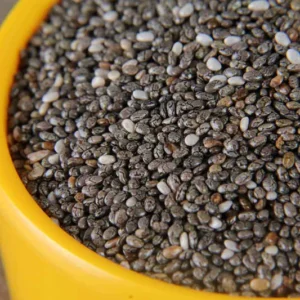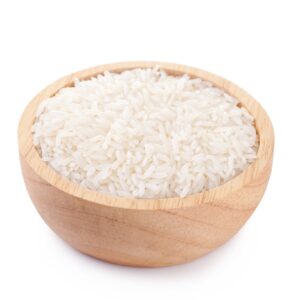Description
Basmati rice is a long-grain rice variety primarily cultivated in the Indian subcontinent, particularly in India and Pakistan. It’s known for its distinctive aroma, nutty flavor, and long, slender grains that elongate and separate when cooked. Here are some key points about Basmati rice:
- Cultivation: Basmati rice is traditionally grown in the fertile plains of the Indian subcontinent, where the climate, soil, and water conditions are conducive to its cultivation. It requires a warm climate with high humidity levels and plenty of water during the growing season.
- Varieties: Basmati rice comes in several varieties, each with its own characteristics and qualities. Some popular varieties include Traditional Basmati, Pusa Basmati, 1121 Basmati, and Super Basmati. Each variety may have different grain lengths, aroma intensities, and cooking properties.
- Aroma and Flavor: One of the most distinctive features of Basmati rice is its aromatic fragrance, often described as floral or nutty. This aroma is due to the presence of natural compounds such as 2-acetyl-1-pyrroline. Basmati rice also has a delicate flavor and a fluffy texture when cooked properly.
- Culinary Uses: Basmati rice is a staple in Indian, Pakistani, and Middle Eastern cuisines, where it’s used in a wide variety of dishes such as biryani, pilaf, pulao, and fried rice. Its long grains and fluffy texture make it ideal for serving alongside curries, kebabs, and other flavorful dishes.
- Nutritional Value: Basmati rice is a good source of carbohydrates and provides essential nutrients such as vitamins, minerals, and dietary fiber. It’s naturally gluten-free and low in fat, making it a suitable option for individuals with gluten intolerance or those seeking a healthy carbohydrate source.
- Cooking: Basmati rice is typically soaked in water for a short period before cooking to help the grains absorb moisture evenly and cook more evenly. It’s usually cooked using the absorption method, where the rice is simmered in water or broth until all the liquid is absorbed, resulting in fluffy, separate grains.
- Quality and Authenticity: Authentic Basmati rice is often identified by its elongated grains, delicate aroma, and distinctive flavor. To ensure quality and authenticity, look for reputable brands or sources that offer certified Basmati rice products.
Specifications
-
Botanical Name
Oryza Sativa
-
Common Names
Basmati
-
Varities
Sugandha Basmati Rice, White Basmati Rice, Brown Basmati Rice, Golden Basmati Rice, Pusa Golden Basmati Rice, Long Grain Basmati Rice, 1121 Raw Basmati Rice, 1121 Sella Basmati Rice, 1121 Steam Basmati Rice, 1121 Golden Sella Basmati Rice, 1121 Brown Basmati Rice, Parboiled Basmati Rice, Sonna Masoori Basmati Rice.
-
Moisture
Max. 10%
-
Cleaning
Machine Clean / Sortex Clean
-
GMO
Non Genetically Modified
-
Origin
India







